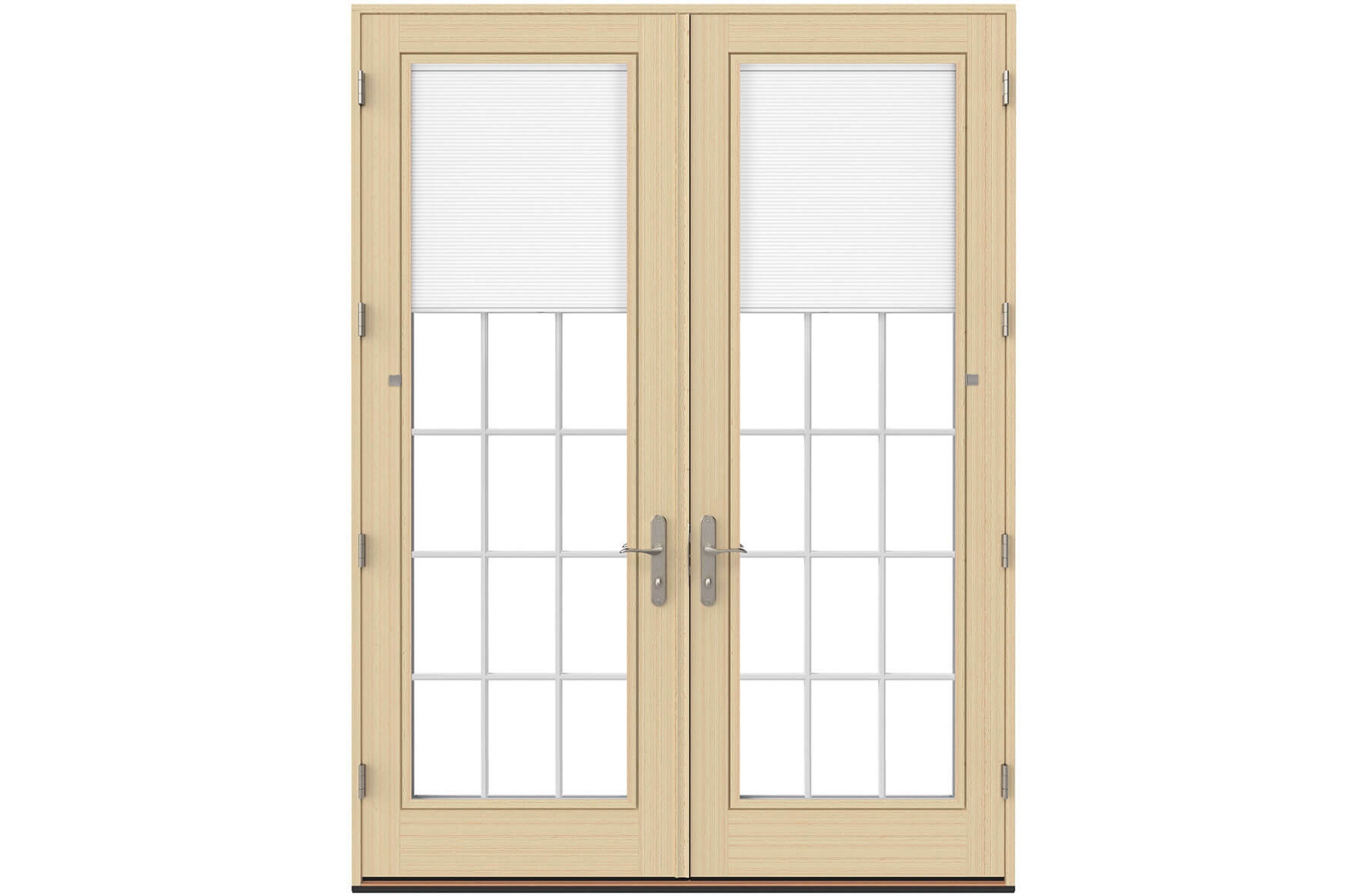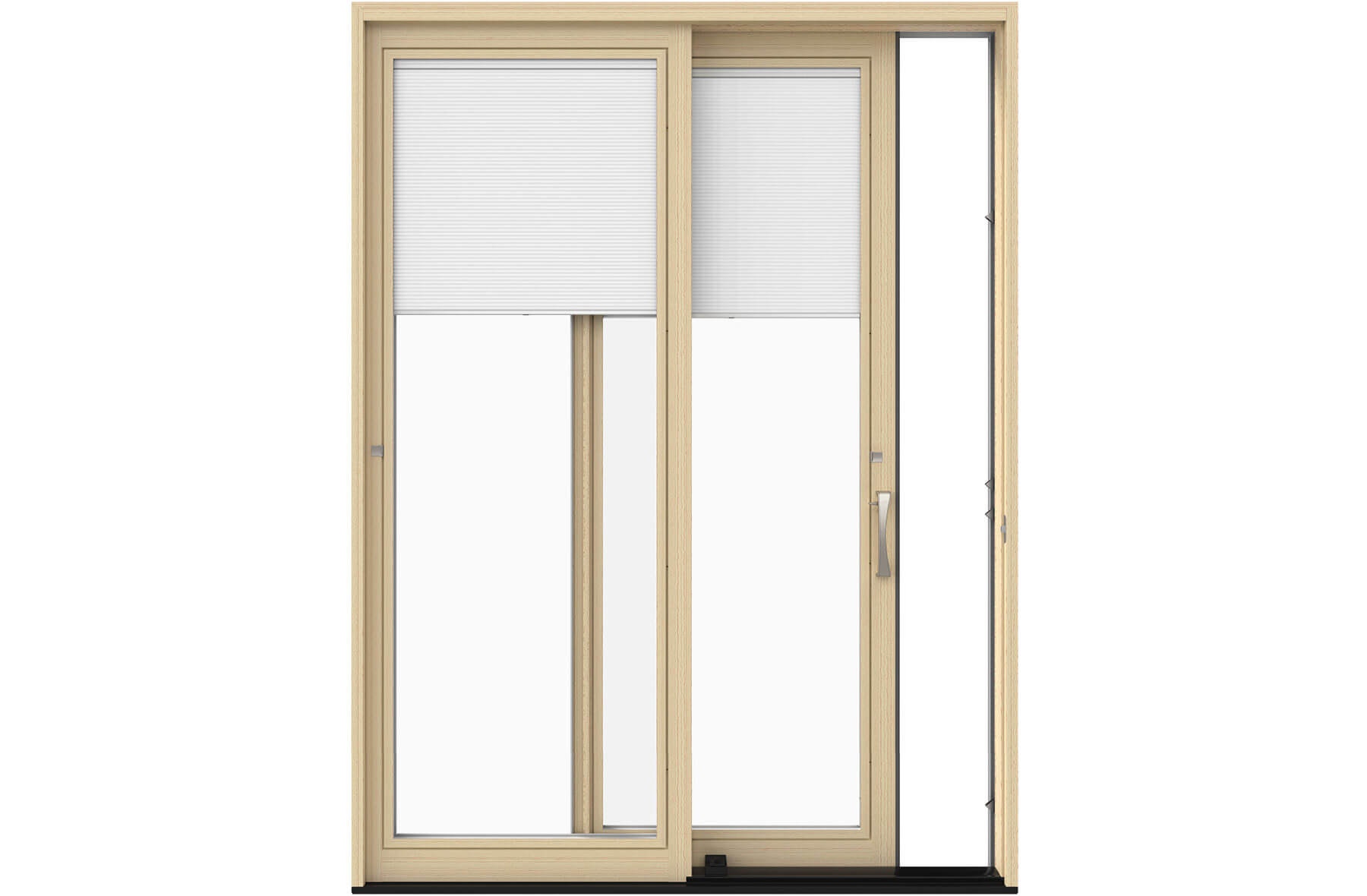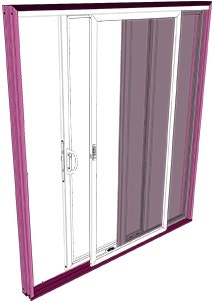Breaking Down the Patio Door Parts
When you are working with a manufacturer, installer or contractor, understanding each component of the door can help you get the final product you want.

ByPella Corporation
Published 2020-01-28

The door industry, from the manufacturers to the installers and contractors, uses a variety of terms when referring to the parts of patio doors. If you are working with one of them on a project for your home, it can be helpful for both of you if you are familiar with the essential components. You don’t have to commit each part to memory, but a basic understanding of where each component is located and what function it serves can make a world of difference.
Read on for a breakdown of the basic exterior and interior parts and hardware of hinged patio doors and sliding glass patio doors that Pella offers.

Hinged Patio Door Parts
Pella’s hinged patio doors are a classic choice for homeowners with a more traditional sense of style. The panels are hinged at the sides and swing in or out depending on what works best for the space. You can choose between a single hinged patio door or a pair of hinged patio doors. The latter option allows for a wider opening to your deck or patio.
While hinged patio doors are a simple and effective solution for creating convenient access between your indoor and outdoor living spaces, the anatomy of a hinged patio door can be quite complex when you break it down into each individual part.

Exterior Parts of a Hinged Patio Door
We’ll start with the astragal, which is the vertical molding that serves as the center post between a pair of hinged door panels. The in-swing panel is the hinged door panel that swings to the inside when opened. At the bottom of the hinged glass door is the threshold which serves as a transition from the door sill to the interior flooring.
You won’t be able to see it, but there is a bulb-and-lead or foam compression system in place called a weatherstrip that helps prevent air and water infiltration.

Interior Parts and Hardware of a Hinged Patio Door
The hinged glass panel opens inward and allows access to Pella’s integrated between-the-glass blinds and shades and grilles. Between-the-glass blinds, as their name would suggest, are window fashions integrated between panes of glass to protect from dust. Their placement and cordless operation also keep them out of the reach of children. As for grilles, Pella offers a wide selection of grilles on wood, fiberglass and vinyl patio doors in a variety of patterns to suit your personal style.
The out-swing is a hinged door panel that swings to the outside when opened. Hinged patio doors also come equipped with a multipoint lock, which is a single handle locking system that secures a door at two or more locking points.
If you are looking for the strike and strike plate, first take a look at the door jamb. A metal plate will be affixed to the door jamb with a hole or holes for the bolt of the door. The strike plate latches to the strike when engaged, holding the door closed. The thumbturn is the component of the door that extends or retracts with a deadbolt or latch bolt.
At the bottom of the hinged patio door is where you’ll find the sweep. The sweep is an energy-efficient and weatherstripping system that forms a seal against air and helps prevent water infiltration between the door and the sill.
At the bottom of the hinged patio door is where you’ll find the sweep. The sweep is an energy-efficient and weatherstripping system that forms a seal against air and helps prevent water infiltration between the door and the sill.

Sliding Patio Door Parts
Sliding patio doors are a good option for tight spaces. Comprised of two panels of glass, one panel slides horizontally to open and close, rather than swing in or out. This means you don’t have to worry about moving furniture to create floor space for your new patio doors.
Breaking down sliding patio doors into parts helps illustrate their ease of operation.

Exterior Parts of a Sliding Patio Door
Each door panel contains a framed sheet of glass. Located on the upright part of a sliding glass door panel is an interlocker. It engages with a corresponding piece in an adjacent panel when the door is closed. There is a door-securing bolt called the footbolt, applied at the bottom of the door, that is designed to allow for foot operation and provide an additional layer of security.
The door roller is the mechanism that gives the door its ability to slide on the sill track, and that mechanism is located at the bottom of the sliding patio door.
Invisible to the naked eye, but part of the structure is argon. It is an inert, nontoxic gas commonly used in insulating glass units to reduce the transfer of heat. Pella’s Low-E insulating glass uses argon between the panes of glass to block 84% of the sun’s ultraviolet rays and help keep your home comfortable, no matter the season.

Interior Parts and Hardware of a Sliding Patio Door
The inoperable panel of your sliding patio doors is called the fixed panel. It has also been referred to as the passive or inactive door panel.
The frame is what surrounds and supports the entire door system of a sliding patio door. The framework is comprised of the head, jamb and sill. The head is the main horizontal part that forms the top of the door panel. The jamb consists of the main vertical parts that form the sides of the door frame. Finally, the sill is the bottom of the frame and rests on the floor.
Sliding patio doors also have their own multipoint locking systems, which secure the door in two places for an added layer of security. The multipoint lock goes hand-in-hand with the door handle, which is available in a variety of different styles from Pella.
Now that you have a better understanding of the parts that comprise a patio door, finding the type that would function best within your home becomes that much easier. Sliding patio doors are a space saver, best suited to make the most out of smaller rooms. Hinged patio doors provide a more traditional touch and fit in spaces where there is ample room. There are functional and stylistic differences between both patio door styles.
Schedule a free consultation to find windows and doors for your home.